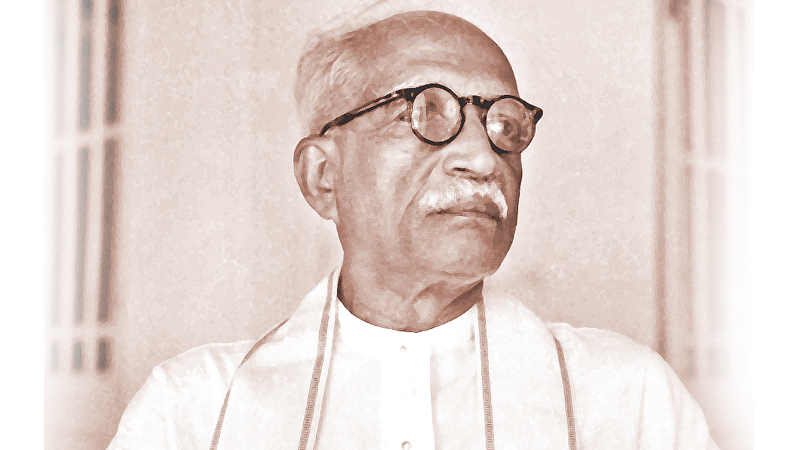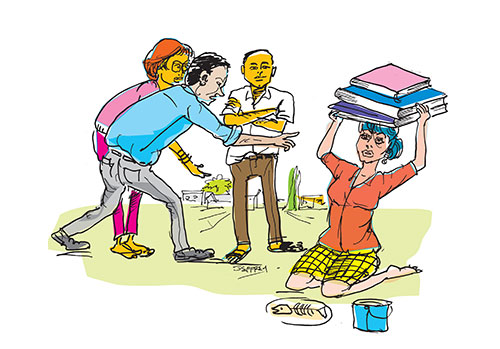by Kaushalya Perera
Panduka Karunanayake’s article “Education’s ‘Three E’s’ and the McUniversities: Some Heretical Thoughts” published in the University of Colombo Review (2021, volume 2 issue 1) swiftly traces the emergence of ‘McUniversities’, where the goal of educating has been changed to be more ‘efficient’, using the Weberian concept of instrumental rationality. This model might increase efficiency, but only at the cost of some important principles. In other (my) words, what seems to matter more, is that a student may graduate sooner, with a sellable qualification but the question of whether he/she has acquired any moral or socio-political values at university becomes immaterial.
The Sri Lankan’s love of qualifications, rather than education, is already known to businesses and scholars. To produce a McGraduate is what Sri Lanka asks its state universities to do as well. In the same article, Panduka Karunanayake exhorts the reader to “define ourselves [universities] or at least describe ourselves” (p.9). This is what I am doing this week in this column.
What is a state university and is it the same as a public university?
A state university in our region, such as in Bangladesh, or a little further away in Turkey and France, is one that is ‘owned’ by the state. This means they are governed by state regulations and receive state funds. By and large, ‘public universities’, such as the national universities in Japan or public universities in the USA, appear to be the same – founded and funded by the state. The differing terminology might merely be regional.
The state university’s maintenance through state funds, however, is now a complicated one. The amount of funding the state provides appears to differ over time and across institutions. In Turkey, state universities received 95% or more of the funds required for their administration in 2020 (according to Hasan Tosun, 2020). In the years after independence, Sri Lankan state universities were fully funded by the state. No more.
Recently, a top administrator at an urban university claimed that they had generated over 60% of the funds required for 2024 by themselves. Six out of 10 postgraduate institutes (e.g., the Postgraduate Institute of Medicine or the Postgraduate Institute of English) were not assigned any Treasury funds for 2023. In Britain, in recent times, public universities are said to receive only about 8-15% of their funding directly from the state. The answer to the question of how much money a ‘public university’ may receive from the state is: it depends. Public universities seem to be called public simply because they use some state funds and this is then taken to mean that such universities are public in nature and function as well.
In Sri Lanka, people usually define universities as either ‘state’ or ‘private’. A ‘state’ university, in my opinion, must also be a public entity, i.e., of the state and serving the public of the country. A private university that is not profit-oriented may well serve the country, too, but its role is defined by its founding institution, to be that of a private entity. This is why I say that at present, Sri Lankan state universities are no longer very public, while private universities are not actually universities at all.
The reduction of state funding described above is now typical across the world and it is justified by pro-privatisation actors as delivering ‘more autonomy’. When universities have more autonomy in governance, they can decide how to teach whom, but more significantly, how to earn the rest of the money they need to run the university. In universities that charge fees from their undergraduates, this has resulted in a steep increase in such fees per individual student.
Sri Lankan state universities are still clearly state universities, as defined above. The Universities Act regulates us; the Ministry of Education and the University Grants Commission oversee us; our student body comes to us through state mechanisms; and I am a state employee.
But am I paid by the state? This is debatable. If the university’s spending is a combination of generated funds and treasury funds and if the higher education segment of the national budget is sustained through foreign loans, is my salary still being paid by the Sri Lankan state?
And am I employed by a ‘public’ university?
If universities are meant to serve the public indirectly or directly, I might argue that I am not employed by a public university. State universities do not serve the public anymore, but only certain factions of the public.
As discussed before in this column, due to the obvious and ongoing breakdown in the state education system, the playing field is no longer a level one. The students being admitted to state universities at present are (mostly) those who have had access to better-resourced schools and/or spent more on private tuition. This does not mean that they are affluent – students from more well-to-do families often opt not to state universities now. State universities still provide social mobility for many people, too. What that choice indicates is that when students enter state universities, families have prioritised spending for education over other expenses.
The public is not served by state education when families must go hungry or travel far from home to access better education. The public is also not served when the state universities they can access are badly-resourced because successive governments have siphoned funds away to other sectors.
What is a private university, then?
The term ‘private university’ may bring to mind the private universities in North America, e.g. Harvard or Cornell. These universities were founded by non-state entities – religious organisations or wealthy philanthropists, and they are run entirely on private funds.
‘Private’ funds in this case include endowments, alumni grants, research grants, corporate funding and fees from students. Such private universities develop their own degree programmes (as do state universities), but their admission criteria are their own.
In Sri Lanka though, private universities are not universities. First, they are usually set up as private companies (for profit and not for profit) or another type of organisation – but not as educational institutions. Many such institutions do not employ permanent or full-time academic staff and a cursory look at websites shows that staff often lack postgraduate qualifications.
More importantly, private ‘universities’ in Sri Lanka operate on a franchise model. They rarely develop their own curricula and typically only provide teaching facilities for external degrees from foreign universities.
In the end, regardless of whether a university is defined as private, public or state, it should have its own dedicated and qualified academic staff and, most importantly, it should develop its own degree programmes. Curricula should serve the needs of the country or region, however that is defined. We may debate the issue of who decides what is important as curricula but obviously, it has to serve to the current and future needs of the social and political fabric it is part of.
This does happen in state universities, even if it is not in an ideal form. Our curricula are designed by qualified academics and our research is of and for this country, whereas the development of a locally-focused curriculum only happens in a miniscule number of private institutes.
Typically, private institutions offer ‘cookie cutter’ degrees; the curriculum is designed by a university from halfway across the world and is taught by their ‘agents’ in countries such as ours. An unfortunate and lesser-known side-effect is that the franchise model also funnels a large percentage of funds generated here to these foreign universities.
A number of questions remain
Who is responsible for funding a ‘public’ university? Is it the public? And if so, why are those funds not arriving to these universities? Is funding the public university something that an individual citizen does – say by paying tuition fees? Wouldn’t such a system make that university a ‘private’ one?
How much or how little can a government – that claims to support public education – divest itself of responsibility concerning state or public universities and yet pretend to be improving the future of our country?
A poorly educated citizen means a poorly educated country, with all the consequences arising from that. Can we sanction governments that refuse to accept the responsibility of making sure that their citizens are actually educated – as ours have constantly done?
Are we happy with governments that leave us to educate ourselves, in whatever fashion we can? And can that individual effort to educate ourselves enable us to become citizens who think humanely, creatively, collectively?
What kind of education do we want for Sri Lanka? What kind of society do we want for Sri Lanka? And how can we force the next government to hear us?



